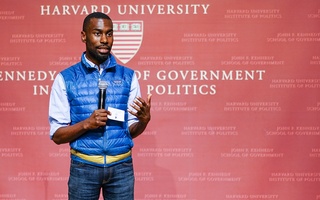{shortcode-86355fc3f62f8eaa06f0bd9ddea1e7d683d9df7f}
In Raymond Carver’s short story “What We Talk About When We Talk About Love,” two couples sit around a dinner table, drinking gin and talking about the nature of true love. As the gin continues to flow, the conversation becomes swifter, less rational. The young lovers continue to disagree about what love is until one of them, Mel, offers a heartwarming story: An old couple nearly die in a car accident but are kept alive by their love. The two live through the crash, and the old man’s only regret after the accident is that, due to his full body cast, he cannot see his wife’s face. This, Mel argues, is what true love looks like.
Nicholas Sparks has created a quite lucrative career predicated on this idea of true love. One of his most common tropes involves an elderly couple, not unlike the one Mel describes in Carver’s story, though in Spark’s work it is often a widowed octogenarian rather than a pair. This latest film, “The Longest Ride,” adapted from the novel of the same name, features an elderly man named Ira (Alan Alda), whom two young lovers, the film’s protagonists, encounter when they save him from a car accident. Inside the car is a box he insists he needs. As it turns out, the box is full of letters—another Sparks trope—he sent to his wife before she died. Through the letters, the story of Ira (whose young iteration is played by Jack Huston) and his late wife Ruth (Oona Chaplin) is played out in parallel to the love story of Ira’s two saviors, Luke (Scott Eastwood) and Sophia (Britt Robertson).
The scenes in which Ira remembers his wife are shot in rose-tinted sepia, as if to openly admit to the audience that the memories are warped by the bias of retrospection. Sparks’s argument is that true love is something that exists only in the norms of the past. The film’s modern love story backs this reading. Luke is a classic, Southern good ol’ boy. When Sophia asks to buy him a drink, he refuses, saying, “That’s not how we do it where I come from.” Traditional gender norms in Sparks’s film are passed off as good manners while the rose-tinted view of these bygone practices is portrayed without the inherent injustice that accompanies them.
Luke’s cowboy life has also been passed through a filter so that the life portrayed on screen has no aspiration to reflect reality and instead presents a whitewashed utopian ideal—a farmhouse fairytale. In fact, one must drive across a wooden bridge over a river to reach Luke’s home, a sort of rural moat without the alligators. All of the rough edges of country life have been made to look beautiful. Despite wearing a hat for much of the film, Luke’s hair always sits deliberately in a James Dean-esque swoosh. His chest hairs are meticulously trimmed.
Perhaps the most bizarre motif in the film is the presence of art. Ruth was an art collector, and Sophia aspires to work in a gallery. The characters often talk about the meaning and value of art. Early on, the vacillations seem to be mere vapid musings, but late in the film, Sparks’s cards are revealed. In the film’s final act, after one of the characters has died (this would merit a spoiler alert if there were not a death in every one of Sparks’s films), his will is being read aloud to a room full of people. In the will, the fallen character writes, “Never forget the true work of art—this thing called life.” Here, Sparks defends the shameless lack of meaning in his films. Unfortunately for Sparks, and his loyal audience, he has created in “The Longest Ride” neither art or anything resembling real life.
This film is much like Mel’s story in “What We Talk About When We Talk About Love,” excepting the fact that, presumably, Sparks was not drunk when he wrote this screenplay. While Carver includes Mel’s love story as an ironic depiction of people’s profound lack of understanding of this crazy little thing called love, Sparks passes his films off as truth. Instead of asking viewers to think, his film instead offers them an airbrushed view of simpler times and simpler places, its flimsy improbability glued together by a reprehensible lack of cultural awareness.
Read more in Arts
'Clouds' Provides Ethereal SpectacleRecommended Articles
-
Where Are They Now?: Allison Feaster `98After posting the WNBA's best regular-season mark this summer, the Los Angeles Sparks were on the verge of elimination in
-
AMUSEMENTS.BOSTON MUSEUM. - "Uncle Tom's Cabin." Performance at 7.45. GLOBE THEATRE. - Willie Edouin's Sparks Company in "A Bunch of
-
Ford Downs Reagan in Dull ContestPresident Ford emerged from the Massachusetts Republican primary yesterday with a 61-per-cent to 35-per-cent victory over former California Gov. Ronald
-
Tweets of the WeekAs we get closer to closing the books on another semester, Harvard athletes are also finishing up the spring sports season, with most teams completing regular season play this weekend. With some free time on their hands as practices and p-sets come to an end, the Crimson’s best athletes took to Twitter this week to discuss everything from walruses to the Game of Thrones season premier.
-
 Activist DeRay Mckesson Stresses Protests, Voter Engagement
Activist DeRay Mckesson Stresses Protests, Voter Engagement













